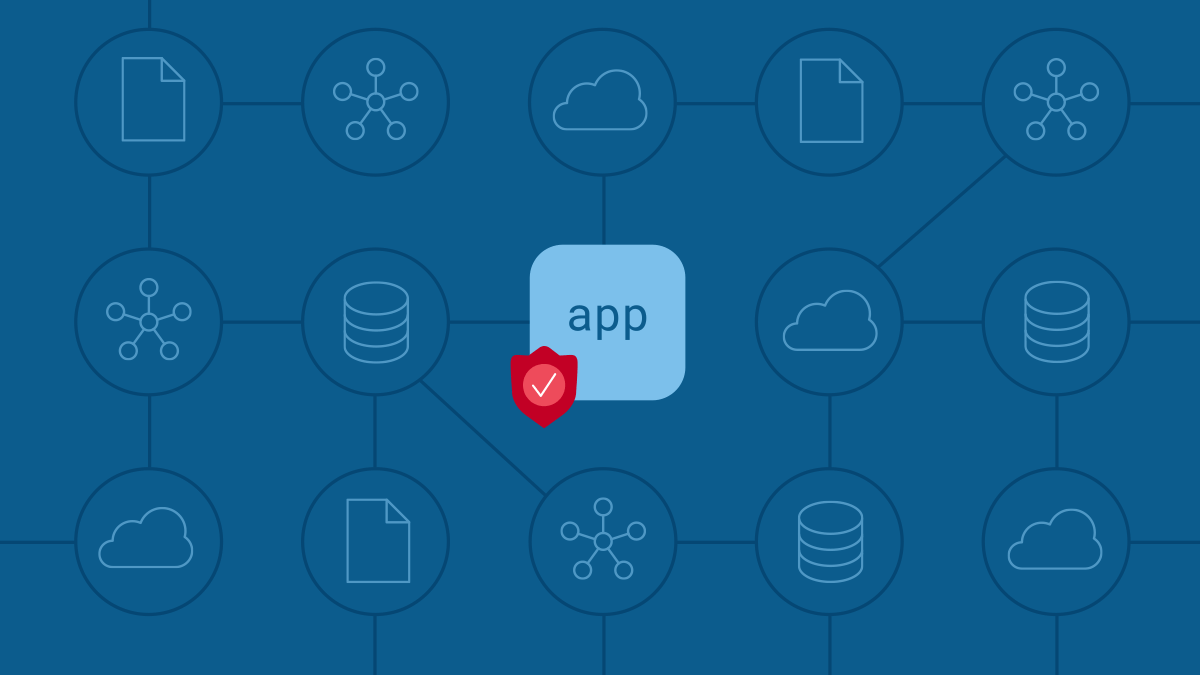SOLUTION OVERVIEW
Protect Apps and APIs by Securing Underlying Infrastructure
Applications are only as secure as the infrastructure on which they run. To bring your digital experiences to life for your customers, it’s critical to protect your network and session protocols as well as cloud-native workloads.

The Rise of Cloud and Architectural Risk
The popularity of cloud-native and multi-cloud apps is increasing risk because traditional security controls are not designed to protect dynamic and highly distributed architectures. Organizations lack the visibility and control to identify a variety of security threats that may surface from a single coordinated attack campaign—for example, denial of service, protocol spoofing, encrypted malware, and abuse of misconfigured cloud APIs.
Businesses look to their cloud infrastructure providers to close the gap, but different cloud providers have varying responsibility models, security postures, and cloud-native tools. Furthermore, moving apps to the cloud does not remove risks to critical network and session protocols that facilitate all digital traffic. In fact, the risk surface will most likely expand as cloud-native infrastructure often lacks sufficient observability and security—creating significant blind spots and opportunities for attackers that can lead to downtime, outage, and business compromise.
Application and Infrastructure Modernization
Apps and APIs are commonly delivered through distributed fabrics of loosely coupled microservices, a design that facilitates rapid delivery of new features and integrations. However, modernization introduces complexity and increases the threat surface for attackers. While many organizations understand the importance of application security, the lowest common denominator is often the infrastructure underneath the business logic.
Without proper visibility into application infrastructure, organizations will develop gaps in their security postures—in network and session security, containers, orchestration tools, virtual machines, cloud provider APIs, all which increase the risk of compromise and breach. Vulnerabilities and misconfigurations at the infrastructure level expose applications to data exfiltration, kernel modifications, unauthorized images, cryptominers, and credential theft.
Analysis of a Breach: Architectural Risk
A sophisticated attack that begins with a vulnerability exploit on a web server can provide a foothold for remote code execution. From there an attacker can escalate privileges and move laterally to a database containing sensitive information. The database may contain user credentials, but more importantly, it may contain an unsecured key for an internal east-west API. This key would allow attackers to modify security controls and exfiltrate immense amounts of sensitive data.
Many organizations are experiencing simulatenous shifts in enterprise and application architectures, development styles, and business models, which combine to increase complexity and risk. Enhanced visibility is indispensable as attackers take advantage of the expanded opportunities within new application paradigms such as multi-cloud architectures.
Key Benefits
Increased Visibility
Protect critical protocols and gain multi-cloud observability through decryption and telemetry analysis from cloud workloads wherever they are deployed.
Cloud-Scale
Combine performance and agility to maintain uptime and automate the insights-to-policy protection loop.
Effective Detection
Get real-time protection with retrospective analysis across billions of data points collected daily, with context and workflow to speed remediation.
Ecosystem Integration
Integrate with your security tools, SIEM, and cloud provider platforms to collect and curate actionable insights.
Secure Your Entire Digital Fabric—from the Network to the Cloud Workload
F5 ensures comprehensive defense of all the architectural components your apps and APIs depend on—providing resilience in the face of denial-of-service attacks, rooting out encrypted malware, and uncovering anomalous executables in cloud workloads so you can proactively prevent compromise.

Key Features
Critical Protocol Hardening
Secure infrastructure at scale by protecting the network and session protocols that underpin digital traffic.
Full-Stack Telemetry
Glean insights across cloud-native infrastructure and the full application stack.
Encrypted Threat Detection
Maximize efficiency and efficacy with policy-based decryption and traffic steering across multiple inspection devices.
Proactive Remediation
Automate security workflows through anomaly detection, machine-generated context, and actionable analytics.
How Does F5 Protect App Infrastructure?
F5 solutions secure application infrastructure to mitigate risk and protect web apps and APIs from attacks that target critical protocols and cloud-native workloads, providing observability across the entire infrastructure on which apps are built, deployed, and operated—which is increasingly a decentralized, distributed, multi-cloud architecture.
F5 solutions provide cloud-scale performance and protocol fluency to defend against volumetric DDoS, DNS hijacking, and encrypted threats that bypass complex security ecosystems.
Cloud workload protection delivers deep telemetry and high-efficacy intrusion detection for modern app workloads, combining rules and machine learning to detect attacks in real time across the entire infrastructure stack: cloud provider APIs, virtual machine instances, containers, and Kubernetes. With behavioral-based detection, F5 solutions can identify insider threats, external threats, and data loss risk for cloud-native applications.
As Aditya Sood of the F5 Office of the CTO has written, “An observability strategy that enables early detection of potential attacks offers the ability to quickly respond and neutralize an attack.”1 When combined with Web App and API Protection, organizations have a detection-in-depth approach to security threats that span applications, APIs, and the cloud-native infrastructure on which they run.
Conclusion
As organizations modernize their application architectures, attack surfaces increase. Highly sophisticated bad actors will use a variety of techniques to exploit web apps and APIs, from vulnerability exploits and business logic abuse to encrypted malware that spreads laterally across cloud-native infrastructure.
The promise of cloud computing comes with considerable risk. A hybrid, multi-cloud digital world inherently increases complexity due to the varying security postures and controls found in disparate environments. This complexity cannot be erased, but it can be managed, and that’s the task technology leaders must embrace and that vendors are seeking to solve.2